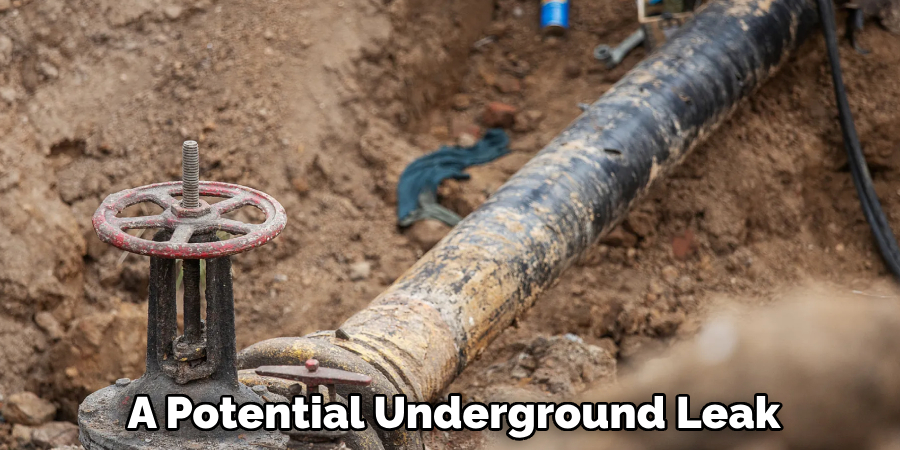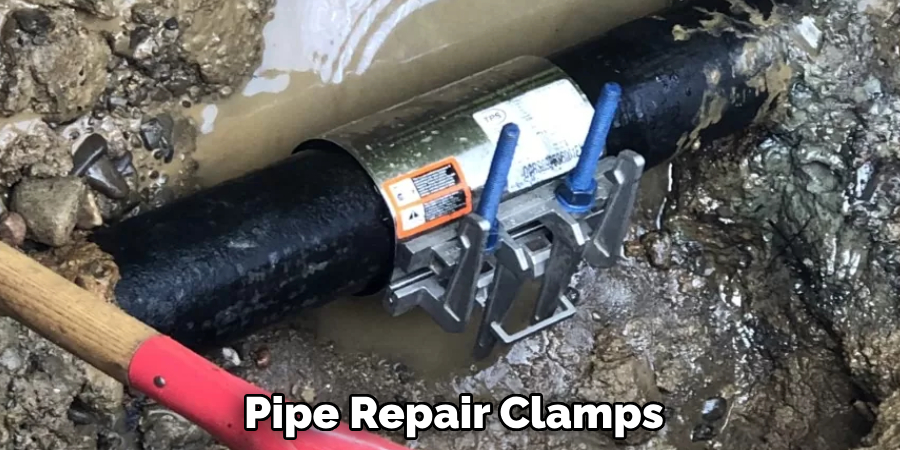The main water line is a crucial component of any property’s plumbing system, serving as the primary conduit that supplies water to the entire home or building. Understanding how to fix a main water line is essential for any homeowner or property manager, as this line is susceptible to various forms of damage. Common causes of main water line damage include corrosion over time, freezing during cold weather, shifting soil conditions, invasive tree roots, or accidental harm from nearby construction activities.

Addressing these issues promptly is vital, as a damaged main water line can lead to numerous problems, such as exorbitant water bills, costly property damage, and even potential health risks due to water contamination. This guide provides a comprehensive step-by-step approach to temporary repairs for main water line leaks, as well as advice on when it is necessary to enlist the expertise of a professional plumber.
Safety Precautions
Before embarking on any main water line repair, observing safety measures is crucial to ensure a secure and effective process. Turn Off the Water Supply: Begin by shutting off the water at the main shut-off valve to prevent potential flooding and unnecessary water damage. Call Utility Companies This precaution helps identify and avoid nearby utilities such as gas or electricity lines, safeguarding against accidental disruptions or hazards.
Wear Protective Gear: Equip yourself with gloves, goggles, and proper footwear to protect against debris, sharp objects, and water pressure during the repair work. Lastly, Check Local Regulations: Be aware that some municipalities have specific requirements for water line repairs, such as needing permits or the involvement of licensed professionals. Verify these regulations ahead of time to ensure compliance and avoid legal complications.
Identifying the Problem
A damaged water line can cause significant inconvenience and expense if not promptly addressed. Recognizing signs of a compromised water line is the first step in restoring normal function. Some telltale indicators include unusually high water bills, which can suggest significant water loss. Observing puddles or soggy areas in the yard that persist even in dry weather can point to a potential underground leak. Additionally, experiencing low water pressure in the house or hearing the sound of running water when all fixtures are off may signal a problem with the main water line.
When suspecting a leak, it’s crucial to locate the source accurately. Begin by walking along the path of the water line from the street to your house, looking for soggy patches or visible leaks. Once identified, carefully use a shovel to dig around the area, taking extra caution to avoid causing further damage to the pipe. Understanding the various types of damage is essential in planning the repair process. These can range from small pinhole leaks to cracks, full breaks or ruptures, and pipe sections that have corroded or deteriorated over time. Identifying the specific issue will guide the repair approach and determine whether professional intervention is necessary.

Tools and Materials Needed
When preparing to repair a main water line, assembling the appropriate tools and materials is vital for a successful operation. Here’s a list of essential items you will need:
1. Tools
- Shovel: Crucial for safely digging to access the damaged pipe.
- Pipe cutter or saw: Necessary for cutting the pipe to the required size.
- Wrenches: Used for loosening or tightening plumbing connections.
- Bucket or tarp: Useful for capturing excess water during repairs.
- Flashlight: Improves visibility in dimly lit or enclosed spaces.
2. Materials
- Pipe repair clamps: Effective for temporarily sealing cracks or small leaks.
- Rubber patch or waterproof tape: Suitable for quick temporary fixes.
- PVC or metal pipe: Any damaged sections need to be replaced.
- Couplings or fittings: Essential for joining new pipe sections to the existing line.
- PVC primer and cement: Important when working with PVC pipes to ensure a secure bond.
- Pipe insulation: Provides added protection against temperature fluctuations.
- Plumber’s epoxy: Useful for sealing minor leaks or small holes in the pipe.
How to Fix a Main Water Line: Temporary Fixes
When facing a damaged main water line, temporary fixes can help manage the situation until a professional plumber can undertake permanent repairs. The following steps outline how to apply temporary solutions effectively:

Step 1: Clean the Area
Once you’ve located the leak, begin by removing diremove dirt and debris thoroughly as possible to ensure that any patch or tape adheres properly.
Step 2: Apply a Rubber Patch
For small leaks, wrap a rubber patch or waterproof tape tightly around the damaged area. Ensure that you cover the entire crack or hole adequately. This method can effectively hold the leak for several days, giving you time to arrange for a more permanent repair.
Step 3: Use a Pipe Repair Clamp
Opt for a pipe repair clamp if the damage involves larger cracks or breaks. Position the clamp directly over the damaged area, and tighten the screws securely to ensure it stays in place. Tip: Verify that the clamp is the right size for the diameter of the pipe to form a watertight seal, which is crucial for maintaining temporary integrity.
Step 4: Call a Plumber for Assistance
Keep in mind that these fixes are only temporary solutions. Contact a professional plumber as soon as possible to make necessary permanent repairs or replacements, ensuring the integrity and functionality of your main water line in the long term.
Insulating and Protecting the Water Line
Properly insulating and protecting your main water line ensures its longevity and functionality. Insulate the Pipe: After completing any repairs, it’s crucial to wrap the pipe with insulation to shield it from temperature fluctuations that can cause expansion and contraction, potentially leading to breaks. Opt for materials such as foam pipe insulation, heat tape, or pipe sleeves, each effective at providing necessary thermal protection.
This is especially important in colder climates where freezing temperatures can pose a significant threat. Check for Tree Root Interference: If the initial damage was due to tree roots infiltrating the area, take steps to prevent future incidents. Installing a root barrier around the pipe can deter roots from infringing upon it again, thereby protecting it from pressure and damage.
Alternatively, relocating the water line to a less densely rooted zone can also be a viable solution. Install a Pressure Regulator: Excessive water pressure is another common cause of stress, potentially leading to leaks or breaks in the water line. By installing a pressure regulator, you can effectively manage water pressure levels, curbing the risk of damage due to sudden surges and ensuring the consistent, safe flow of water to your property.

When to Call a Professional Plumber
In certain situations, enlisting the expertise of a professional plumber becomes imperative. Complex repairs, such as those involving breaks near the street connection or significant damage to the water line, require the skills and tools of a licensed plumber to ensure safe and effective restoration. If issues arise with the main shut-off valve, either inoperable or faulty, a professional can swiftly address and resolve these problems, preventing further inconvenience.
Additionally, in many regions, the city or utility provider is responsible for water line maintenance between the street and the meter. It’s crucial to contact them to confirm who bears the repair responsibilities. For repairs involving extensive digging or replacement of large pipe sections, local regulations might require acquiring a permit or using professional services to comply with legal and safety standards. Engaging a professional not only assures compliance but also quality in repair work.
Frequently Asked Questions About Main Water Line Repairs
1. How Can I Tell if My Main Water Line Is Leaking?
Indicators of a leaking main water line may include unusually high water bills, decreased water pressure, wet patches in your yard, or the sound of running water when none should be used. If you notice these signs, consider investigating further to pinpoint the issue.
2. Can I Repair a Main Water Line on My Own?
While temporary fixes, like using pipe repair clamps or waterproof tape, can be managed by homeowners, it is recommended to hire a professional plumber for permanent repairs to ensure safety and compliance with local regulations.
3. How Much Does It Typically Cost to Repair a Main Water Line?
The cost of repairing a main water line can vary widely based on factors like the extent of the damage, the local plumbing market, and any necessary permits. Simple repairs might cost a few hundred dollars, while more extensive work can run into the thousands.
4. What Should I Do if My Water Line Repeatedly Suffers Damage from Tree Roots?
If tree roots are a recurring issue, consider installing a root barrier or moving the water line to a safer location. Consulting with a professional can provide tailored solutions to prevent future damage and maintain the integrity of your water line.

Conclusion
Fixing a main water line promptly is essential to preventing water waste, property damage, and potential health risks. Immediate attention to any identified issues helps avoid escalating problems that can result in costly repairs. While temporary fixes serve as valuable intermediate measures to control leaks and cracks, they should not replace professional repairs.
Calling a professional plumber ensures the problem is addressed with the appropriate expertise and equipment. Regular inspection and maintenance of the main water line are crucial in detecting early signs of wear or damage, ultimately helping to avert major issues. By incorporating routine checks, you can identify when to explore “how to fix a main water line” should problems arise, ensuring efficiency and safety. Prioritizing these practices safeguards your property and conserves vital water resources in the long term.
